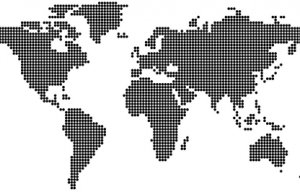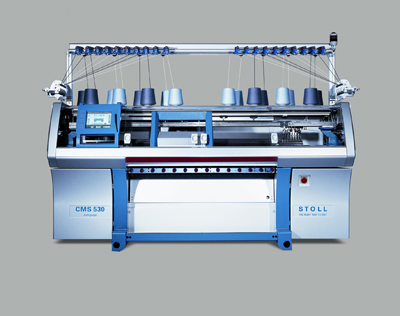
Decrease in worldwide shipments of new textile machinery in 2019
- Electronic flat knitting machine shipments down just 7% to 20,300 - Circular knitting shipments down 21% but still better than pre-boom period The period of heavy investment in most textile machinery segments between 2003 and 2007 came to an abrupt end in 2008. All textile machinery segments recorded lower shipments in the range of -3% to -66% in 2008 as compared to 2007. That investment boom up until 2007 was closely related to China’s integration into the WTO structur

4th June 2009
Knitting Industry
|
Zurich
 - Electronic flat knitting machine shipments down just 7% to 20,300
- Electronic flat knitting machine shipments down just 7% to 20,300
- Circular knitting shipments down 21% but still better than pre-boom period
The period of heavy investment in most textile machinery segments between 2003 and 2007 came to an abrupt end in 2008. All textile machinery segments recorded lower shipments in the range of -3% to -66% in 2008 as compared to 2007.
That investment boom up until 2007 was closely related to China’s integration into the WTO structures and the phasing-out of the traditional quota-regime under the WTO-Agreement on Textiles and Clothing (ATC) at the end of 2007-2008. Trade in textile and clothing products is no longer subject to quotas but is now governed by the general rules and disciplines embodied in the multilateral trading system of the World Trade Organization (WTO).
These are the main results of the 31st annual International Textile Machinery Shipment Statistics (ITMSS) just released by the International Textile Manufacturers Federation (ITMF). The report covers six types of textile machinery, namely spinning, texturing, weaving, large circular knitting, flat knitting and finishing machinery. The 2008 survey has been compiled in cooperation with some 133 textile machinery manufacturers, representing a comprehensive measure of world output.
The circular knitting machines segment recorded a fall of 21% to 21,150 in comparison to 2007. This was the lowest level during the past five years but still considerably higher than the pre-2004 period. With 87% Asia was the preferred region of investments in circular knitting machines. Like in the other segments the biggest investor in this type of knitting machinery was China with 14,400 or 68% of global shipments. Bangladesh was a distant second with 1,070 machines or 5% followed by India with 850 or 4%, Turkey with 600 or 3% and Indonesia and Brazil with 530 or 2.5% each.
The decrease of global shipments of textile machinery was less pronounced in the segment of electronic flat knitting machines. Global shipments in 2008 were down by 7% to 20,300. The bulk of shipments went to Asia (88%) with Europe absorbing 10.5%. Once more China was the biggest single investor in electronic flat knitting machines receiving 8,970 machines (44%) followed by Hong Kong with 7,110 (35%), Italy with 1,120 (6%), Turkey with 760 (4%) and Cambodia with 620 (3%).
After five years of heavy investment, especially in China, shipments of short-staple spindles plummeted considerably in 2008. Compared to 2007 global shipments dropped by 33% to 8.64 million spindles. Nevertheless, this is still well above the pre-investment boom levels. By far the largest part of this new machinery was absorbed by Asia (8.31 million or 96%). China installed 3.69 million or 43% of global shipments, followed by India (2.53 million or 29%), Bangladesh (642,000 or 7%), Vietnam (580,000 or 6.5%), Indonesia (250,000 or 2.9%) and Pakistan (238,000 or 2.8%).
Global shipments of long-staple (wool) spindles decreased in 2008 slightly by 3% to 143,000. While shipments to Asia rose by +17% to 115,350, mainly as a consequence of higher investments in India and Indonesia. They fell in Europe (including Turkey) by 54% to a total of 18,700. Shipments to South America remained almost unchanged at approx. 7,000 while North America recorded again some shipments in 2008 (2,500) which was not the case in 2007. Unlike the previous year Africa did not make any investment in long-staple spindles in 2008.
After an exceptional sky-rocketing increase in 2007 to 576,000 (+68% compared to 2006), investments in open-end rotors plummeted in 2008 by 66% to 195,650. With 143,350 rotors or 73% Asia was again the main recipient of open-end rotors. China’s global share reached 46% or 89,200 followed by Brazil as a distant second with 13% or 24,400, India with 9% or 17,700 and Bangladesh with 6% or 12,000. After an extraordinary investment boom in Turkey in 2007, shipments of open-end rotors dropped considerably in 2008 from 135,800 to mere 7,500.
Shipments of single heater draw-texturing spindles (for polyamide filaments) fell by 20% to 5,230 in 2008. China was by far the biggest investor with 4,300 spindles representing 82% of total investment followed by Thailand with 430 spindles or 8%.
The amount of shipped double heater draw-texturing spindles (for polyester filament) dropped by 34% to 163,000 back to the levels of the pre-investment boom period. The biggest investor was again China with 62,600 new spindles or 38% of global investment followed by India with 45,000 or 27%, Syria with 10,800 or 7%, Japan with 7,400 or 5% and Vietnam with 7,000 or 4%.
Investments in shuttle-less looms plummeted in 2008 by 34% to 44,800 machines marking the lowest investment level since 2000, the year when shipments of Chinese textile machinery manufacturers were included for the first time in this survey. Almost 40,000 or 90% of all machines went to Asia. Country-wise China was again by far the biggest recipient of shuttle-less looms having installed 28,600 or 65% of total shipments in 2008. With 3,300 and 3,050 or 7% respectively, India and Bangladesh were distant second and third, followed by Indonesia with 1,700 or 4% and Brazil with 830 or 2%.
The 2008 edition of the ITMF international textile machinery shipment statistics includes for the fourth time data on finishing for woven and knitted fabrics covering both wet and dry finishing technologies and differentiating between installation for discontinuous and continuous finishing processes.

Business intelligence for the fibre, textiles and apparel industries: technologies, innovations, markets, investments, trade policy, sourcing, strategy...
Find out more